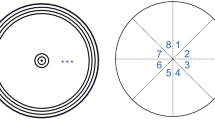Abstract
A major challenge in using GPS guidance for aircraft final approach and landing is to reject interference that can jam reception of the GPS signals. Antenna arrays, which use space–time adaptive processing (STAP), significantly improve the signal to interference plus noise ratio, but at the possible expense of distorting the received signals, leading to timing biases that may degrade navigation performance. Rather than a sophisticated calibration approach to remove biases introduced by STAP, this paper demonstrates that a relatively compact calibration strategy can substantially reduce navigation biases, even under elevated interference conditions. Consequently, this paper develops an antenna bias calibration strategy for two classes of adaptive array algorithm and validates this method using both simulated and experimental data with operational hardware in the loop. A proof-of-concept system and an operational prototype are described, which implement the adaptive antenna algorithms and deterministic corrections. This investigation demonstrates that systems with adaptive antenna arrays can approach the accuracy and integrity requirements for automatic aircraft landing, and in particular for sea-based landing on board aircraft carriers, while simultaneously providing significant attenuation of interference. Evidence suggests that achieving these goals is possible with minimal restrictions on system hardware configuration—specifically, limitations on the permissible level of antenna anisotropy and the use of sufficient analog-to-digital converter resolution.






Similar content being viewed by others
References
Applebaum SP (1976) Adaptive arrays. IEEE Trans Antennas Propag 24(5):585–598
Backén S, Akos DM (2006) Antenna array calibration using live GNSS signals. In: Proc NAVITEC 2006
Compton RT Jr (1988) Adaptive antennas: concepts and performance. Prentice-Hall, Englewood Cliffs
De Lorenzo DS (2007) Navigation accuracy and interference rejection for GPS adaptive antenna arrays. Dissertation, Stanford University
Fante RL, Vaccaro JJ (1998) Cancellation of jammers and jammer multipath in a GPS receiver. IEEE Aerosp Electr Syst Mag 13(11):25–28
Fante RL, Vaccaro JJ (2000) Wideband cancellation of interference in a GPS receive array. IEEE Trans Aerosp Electr Syst 2(2):549–564
Frost OL (1972) An algorithm for linearly constrained adaptive array processing. Proc IEEE 60(8):926–935
Gromov KG (2002) GIDL: generalized interference detection and localization system. Dissertation, Stanford University
Junqueira C, Ribeiro MV, Romano JMT (2000) Adaptive techniques for GPS system enhancement. In: Proc ION GPS 2000, pp 2477–2484
Kim US (2007) Mitigation of signal biases introduced by controlled reception pattern antennas in a high integrity carrier phase differential GPS system. Dissertation, Stanford University
Kim US, De Lorenzo DS, Gautier J, Enge P, Akos D, Orr JA (2004a) Precise phase calibration of a controlled reception pattern GPS antenna for JPALS. In: Proc IEEE PLANS, pp 478–485
Kim US, De Lorenzo DS, Gautier J, Enge P, Orr JA (2004b) Phase effects analysis of patch antenna CRPAs for JPALS. In: Proc ION GNSS 2004, pp 1531–1538
McGraw GA, Ryan Young SY, Reichenauer K (2004) Evaluation of GPS anti-jam system effects on pseudorange and carrier phase measurements for precision approach and landing. In: Proc ION GNSS 2004, pp 2742–2751
O’Brien AJ, Gupta IJ (2008) Optimum adaptive filtering for GNSS antenna arrays. In: Proc ION GNSS 2008, pp 2796–2805
Peterson BR, Pullen S, Pervan B, McGraw G, Skidmore T, Anderson S (2005) Investigation of common architectures for land- and sea-based JPALS. In: Proc ION GNSS 2005, pp 26–37
Rife J, Khanafseh S, Pullen S, De Lorenzo DS, Kim US, Koenig M, Chiou T, Kempny B, Pervan B (2008) Navigation, interference suppression, and fault monitoring in the sea-based joint precision approach and landing System. Proc IEEE 96(12):1–18
Spilker JJ, Natali FD (1996) Interference effects and mitigation techniques. In: Parkinson BW, Spilker JJ (eds) Global positioning system: theory and applications I. AIAA, Reston, pp 717–771
Widrow B, Stearns SD (1985) Adaptive signal processing. Prentice-Hall, Englewood Cliffs
Widrow B, Mantey PE, Griffiths LJ, Goode BB (1967) Adaptive antenna systems. Proc IEEE 55(12):2143–2159
Acknowledgments
The authors gratefully acknowledge the support of the JPALS Program Office and the Naval Air Warfare Center Aircraft Division through contract N00421-05-C-0068 and the Federal Aviation Administration on Cooperative Agreement 97-G-012. The authors also thank Dr. Herb Rauch, Dr. Jennifer Gautier, Dr. Ung-Suok Kim, and Prof. Dennis Akos for useful discussions that contributed to this work.
Author information
Authors and Affiliations
Corresponding authors
Additional information
This work is respectfully dedicated to the memory of Dr. Herb Rauch, who passed away as this article was going to press.
Rights and permissions
About this article
Cite this article
De Lorenzo, D.S., Lo, S.C., Enge, P.K. et al. Calibrating adaptive antenna arrays for high-integrity GPS. GPS Solut 16, 221–230 (2012). https://doi.org/10.1007/s10291-011-0224-x
Received:
Accepted:
Published:
Issue Date:
DOI: https://doi.org/10.1007/s10291-011-0224-x




